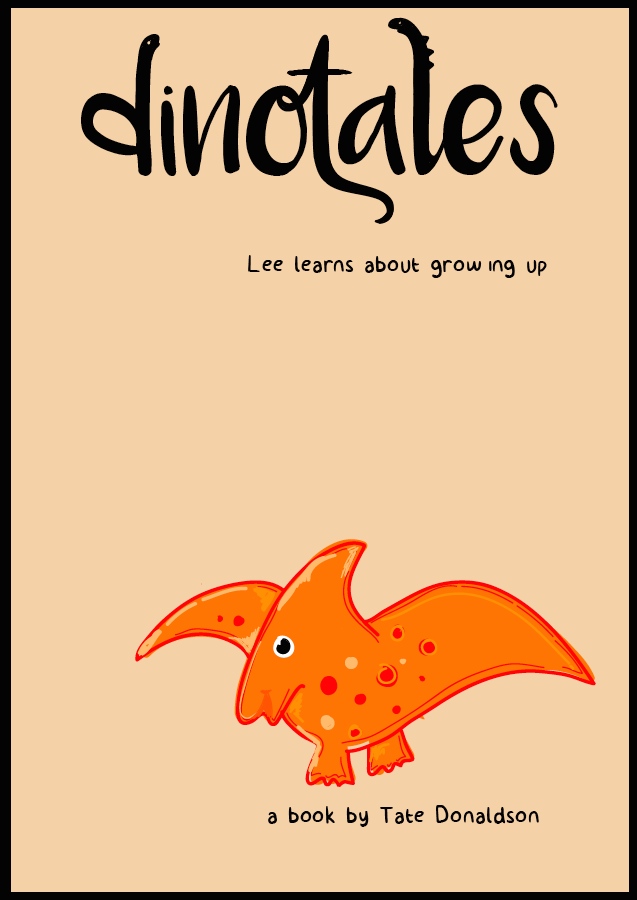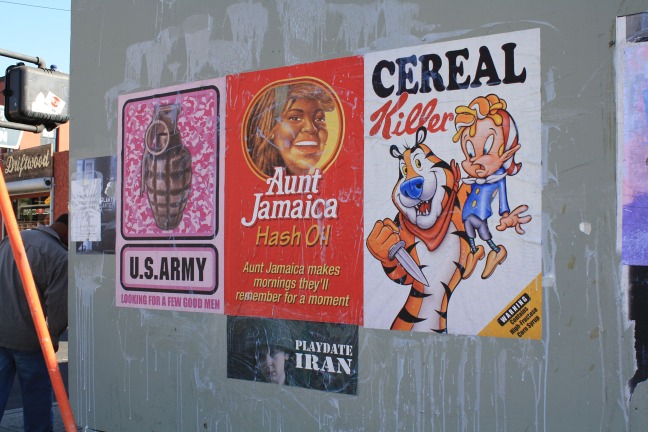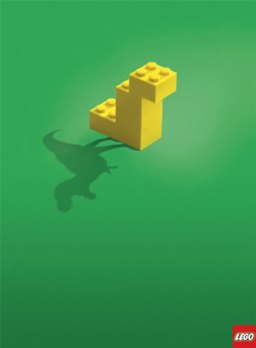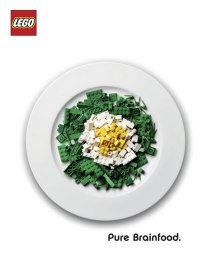From the day we are brought into this world we are brought into the ongoing divide between males and females, boys wear little blue hats and girls wear little pink hat in the maternity ward. As you grow up girls go to ballet class and boys hang around skate parks. Of course this is not to the extent it used to be since the rise of the suffragettes. This is not a piece about feminism or a rant about equality for men and women. This is a deeper look into the world of advertising, branding and packaging. Over the past few months I have looked at nearly every aspect of branding and advertising and the subjection of men and women, fashion being the largest. My interest though, is one of food. Through the power of subliminal messaging we are subjected every day to the stereotype that men portray strength and women portray fragility and vulnerability in the form of overly sexualised food advertising.
The Yorkie chocolate bar from Nestlé has always told us they are “not for girls”. They are to be growled from their wrappers and chewed in mouth-sized chunks by manly men, men with stubble, men with muscles that bulge like bellies. Flakes, however, are for ladies. Sexy ones, in lipstick and baths, who crumble off a feminine bite, before letting their eyes fall closed in pleasure. Eva Wiseman, Guardian
This “not for girls” theory unfortunately does not stop at Nestlé though, McCoys and Magnum are both equally guilty of inducing the same boy scout mentality of ‘no girls allowed’ within their advertising. The thing that strikes me as odd is not only are women not allowed into these ‘exclusive’ clubs, they are also being used to sell the product. Magnum, a brand that is apparently meant to be based towards women, released an ice cream chocolate bar that is exclusively for men despite the advertisement portraying the ‘product’ sticking out of the underwear of a scantily dressed female model. The advertisers have done this on purpose because they know a product designed for men will sell a lot faster when displayed on an attractive woman. This has been referred to as the ‘Male gaze.’
Laura Mulvey originally coined the expression “male gaze” in 1975. Mulvey is know for her work in the cinematic side of objectification but I feel the ‘Male gaze’ applies broadly across the subject of advertising as well. Mulvey believes that in film audiences have to ‘view’ characters from the perspective of a heterosexual male. “The camera lingers on the curves of the female body and events which occur to women are presented largely in the context of a mans reaction to these events.” L,Mulvey The male gaze.
Mulvey held an experiment where you had to watch a short clip from a film of a man and woman having a conversation, after the clip you answer a few basic questions. These included stating the eye colour, cloth colour and shoe colour of both characters. The outcome being that you don’t remember, and if you can remember one or two you were still distracted. Mulvey claims this is because your eye is on the woman, the scene has all been designed that way.
“To gaze implies more than just to look at- it signifies a psychological relationship of power, in which the gazer is superior to the object of the gaze.” Jonathan Schroeder (1998)
The main thing I personally find frustrating about this subject isn’t necessarily the objectification and sexualisation of the female and her “curves” within advertising. My issue is that it’s completely out of context, within these advertisements we are sexualising the female body in situations where “female sexiness has nothing to do with the product being sold.” By having a scantily clad very attractive woman eating an unhealthy hamburger leaning over the bonnet of a very sexy car is in my eyes false advertising. It eludes that by eating these burgers you will look like her and if we know anything from articles and studies on obesity, we know this to not be the case.
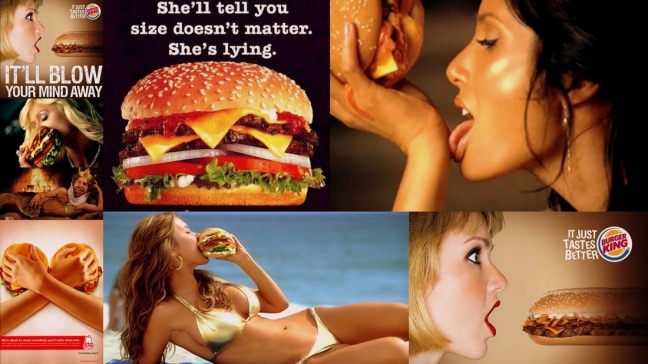
For as long as modern advertising has existed, women’s bodies have been used to sell everything from cars to fast food. The models in the advertisements are being used as a lure to get young men to buy the product (using women as decoration.) Female sexuality, you see, is potent enough to bend men to its will, and the advertisers are hoping that the pretty girl is pretty enough to convince the young man watching to buy the product that has nothing to do with naked women. The biggest culprit I found within the food industry for over sexualising women for consumer based purposes was ‘Burger King.’
Subliminal messaging is when erotic imagery, symbols and words such as ‘sex’ or ‘fuck’ is placed into advertisements without hitting the audience’s conscious mind making you want to purchase the product because lets face it, sex sells. Burger King use subliminal messages in the form of sexualised innuendoes and eluding to the idea of sexual favours. “She’ll tell you size doesn’t matter. She’s lying” Burger King slogan implies they are no longer talking about their burgers but the size of a mans penis which for some reason makes men want to buy the product, maybe to show they have nothing to hide? Strange. “Irresistibly long and beefy” Burger King slogan is another favourite of mine eluding that beyond the length of the poster there is a woman on her knees ‘perfuming a sexual act’ again attracting men to the product with the addition of their famous strap line “Have it your way.” I have to admit at first glance I found these both quite funny, they are sexual yes, but we have to have a sense of humour about some things. The one I did have a problem with though was the “Gold collection” Burger King slogan depicting a naked woman painted gold. This is another advertisement that falls under the category of unnecessary, it isn’t making a pun or an innuendo like the other two, it is literally a naked woman for the sake of it. You could also argue that the subliminal messaging behind it portrays the woman as some sort of golden trophy implying that when you buy this burger you also win the girl and you turn into the sort of royalty that should have sort of woman hanging off your arm. ‘Buy the product and you might get the girl.’
Throughout my research I was often pointed in the direction of actual foods men and women prefer. I wasn’t surprised to see it followed the stereotypical caveman theory of the man being the hunter and the woman as the gatherer. I decided to do a little research of my own. I simply typed into the search engine “Food for men.” It came up with a few pictures of men smiling and holding up healthy food but also a lot of images portraying steaks and burgers. Whereas when I typed in the same thing for women, the images I got were either women looking almost lustfully at bowl of fruit and salad as well as a lot of chocolate and ice cream. I think this comes down to yet another age old stereotype that when a woman gets dumped or nears her ‘time of the month’ all she does it sit on her sofa sobbing into a tub of ice cream. However, there also seems to be a strong suggestion that chocolate gives a woman pleasure. Is this true?
A few students at the university of Sussex have supposedly proven that chocolate gets us more excited than kisses. They have texted this by monitoring their brain waves and heart beats through both activities. Saying that chocolate melting on your tongue gives a longer lasting ‘pleasure’ than kissing does. However, there is no evidence that says anything about women receiving more pleasure from it than men so why do we aim advertising of chocolate towards women and why do we overly sexualise the product. Magnum, who I touched upon earlier are seen in this advertisement to elude how pleasurable their chocolate ice creams can be. The woman in the ad looks at the height of pleasure with a strap line of “mini size, maximum pleasure.” So far it is the only advertisement of food I have come across that depicts a woman in a sexual light that is actually based at women and might stand a chance at enticing a woman to buy it.
However, with anything good there is always something bad. This specific example from Magnum is a good example of how subliminal messaging can work without objectifying. Unfortunately the same cannot be said about this advertisement for ‘Kitkat.’ Subliminal messaging is powerful enough to make you buy something when you don’t ‘really need it’ but when the spell is broken and we have spotted the message, it can almost have the opposite effect. With the implications of this ad not being very subtle, it could have the undesired effect for the company and massively see a decrease in their sales. You have to ask yourself why a company thats main client is apparently women would use an ad and strap line as crude as this.
“When women’s bodies get displayed on film for men to enjoy, they’re displayed for a very specific purpose: to sell men on the idea that they can have, own, and enjoy the woman on display. This is why the word objectification exists. To describe the phenomenon that reduces women to mere parts and equates them with objects that can be possessed and displayed, like prizes.” MsCinephile blog 4.22.14 Girls (and boys) on film

I have looked an awful lot into the idea of how women are portrayed in food advertisements over the priority of men because I feel the symbols are not the same. Although this advert of Haagen-Dazs caught my eye. It is one of the only examples I found where a brand is using a man to sell their product to women. Furthermore it is not just an ‘attractive’ man, it is an attractive, wealthy and successful man that we are all familiar with. Usually brands are very careful about doing this. By giving your brand a face you are risking a lot as a company. You will find your clients get used to this face and if it changes you suddenly have unhappy customers. By adding a ‘celebrity’ to the face of your brand, not only are you opening your company up to scandals in the sense that if that celebrity appears poorly in the tabloids it will reflect back onto your company but also in a sense you are de-personalising your brand and essentially making it ‘less accessible’ to the ordinary person.
Ed Culf, the marketing director at General Mills, said: “Bradley Cooper is the first celebrity to appear in a Häagen-Dazs campaign and is a perfect match for the brand, epitomizing class and style. The 30-second TV ad will roll out on TV channels, including the ITV network and Channel 4, which best appeal to the brand’s target audience of women aged 16-34. It likens ‘The House of Häagen-Dazs’ to fashion brands such as the ‘House of Chanel’”.
The objectification of men within advertising is not equal to that of women because when men are portrayed, the ideas of strength, capability, power and vigour are put forward. Whereas the same can’t be said about the standard objectification of women, which usually revolves around body parts and “sexy” images of women usually being relaxed, lying down, finger in the mouth like a child. Submissive, pliant, docile.



